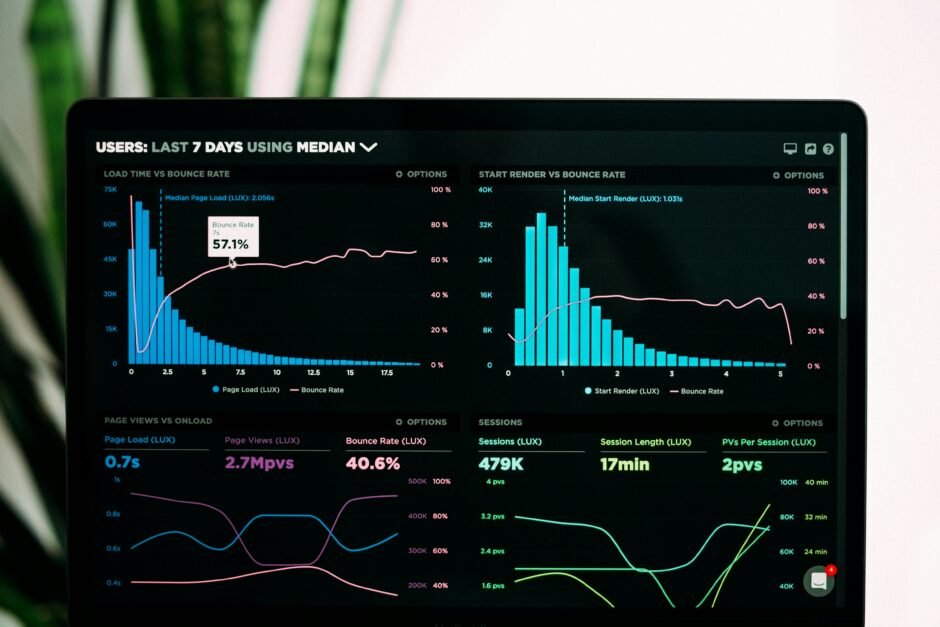Introduction In the modern era of cloud computing, software architecture plays a crucial role in enabling organizations to leverage the full potential of the cloud. With the increasing adoption of…
BarCode Risk Monitor: Mapping the Threat Landscape

BarCode Risk Monitor: Mapping the Threat Landscape
Barcodes have become an integral part of modern business operations. They enable efficient tracking and management of inventory, enhance supply chain visibility, and streamline the checkout process. However, like any technology, barcodes also come with their own set of risks. In this blog post, we will explore the potential risks associated with barcodes and discuss strategies to mitigate them effectively.
The Risks of Barcodes
1. Counterfeit Products
Barcodes are widely used for product identification and authentication. However, counterfeiters can easily replicate barcodes, leading to the sale of counterfeit products. This not only poses a significant risk to consumers but also damages the reputation of the brand. To mitigate this risk, businesses should consider implementing barcode verification systems that can detect counterfeit barcodes.

2. Data Integrity
Barcodes store data in a machine-readable format, but errors can occur during the encoding process. These errors can result in incorrect product information, leading to inventory management issues and customer dissatisfaction. To ensure data integrity, businesses should implement barcode validation checks and regularly audit their barcode systems.
3. Barcode Duplication
Barcode duplication can occur when multiple products have the same barcode, leading to confusion and errors in inventory management. This can result in stockouts, overstocking, and inaccurate sales data. To prevent barcode duplication, businesses should implement unique barcode generation processes and regularly update their barcode databases.
4. Barcode Scanning Errors
Barcode scanning errors can occur due to various factors such as damaged barcodes, poor barcode quality, or improper scanning techniques. These errors can lead to delays in order fulfillment, incorrect inventory counts, and customer dissatisfaction. To minimize barcode scanning errors, businesses should invest in high-quality barcode scanners and provide training to employees on proper scanning techniques.

5. Security Vulnerabilities
Barcodes can be vulnerable to security breaches, especially when used for sensitive information such as payment data or personal identification. Hackers can intercept barcode data, manipulate it, or use it for fraudulent activities. To enhance barcode security, businesses should implement encryption techniques, use secure barcode printing methods, and regularly update their barcode systems to protect against emerging threats.
Strategies to Mitigate Barcode Risks
1. Barcode Verification
Implement barcode verification systems to ensure the authenticity and integrity of barcodes. These systems can validate the barcode structure, check for counterfeit barcodes, and detect any encoding errors. Barcode verification can be done using specialized software or through partnerships with third-party verification services.
2. Regular Audits
Conduct regular audits of barcode systems to identify any discrepancies or potential risks. This includes verifying barcode databases, checking for barcode duplication, and reviewing data integrity. Audits should be performed by trained professionals who can identify and address any issues promptly.

3. Barcode Quality Control
Maintain high standards of barcode quality to minimize scanning errors. This includes using high-quality barcode printing techniques, ensuring barcode readability under various conditions, and regularly checking for barcode damage or wear. Barcode quality control should be an ongoing process to prevent any disruptions in operations.
4. Employee Training
Provide comprehensive training to employees on barcode scanning techniques, error recognition, and proper handling of barcode systems. This will help minimize scanning errors, improve efficiency, and ensure accurate data capture. Regular refresher courses should be conducted to keep employees updated on the latest barcode technologies and best practices.
5. Secure Barcode Printing
Implement secure barcode printing methods to prevent unauthorized duplication or tampering. This includes using secure printing materials, implementing unique barcode generation processes, and restricting access to barcode printing facilities. Secure barcode printing helps protect against counterfeit products and enhances overall supply chain security.

Conclusion
Barcodes have revolutionized the way businesses manage inventory and track products. However, they also come with their own set of risks. By understanding these risks and implementing effective mitigation strategies, businesses can harness the power of barcodes while ensuring data integrity, security, and customer satisfaction. Barcode risk radar enables businesses to navigate the barcode landscape with confidence and stay ahead of potential threats.
https://itexamsusa.blogspot.com/2023/12/a-comprehensive-guide-to-machine.html
https://itexamsusa.blogspot.com/2023/10/exam-dp-203-data-engineering-on.html
https://itexamsusa.blogspot.com/2023/10/ccnp-enterprise-advanced-routing-enarsi.html
https://itexamsusa.blogspot.com/2023/10/comptia-project-pk0-005-cert-guide.html
https://itexamsusa.blogspot.com/2023/09/spring-framework-5-to-build-end-to-end.html
https://itexamsusa.blogspot.com/2023/08/how-to-become-blockchain-developer.html
https://itexamsusa.blogspot.com/2023/07/ultimate-blogging-tips-for-beginners.html
https://itexamsusa.blogspot.com/2023/07/cisco-bandwidth-vs-clock-rate-and-speed.html































